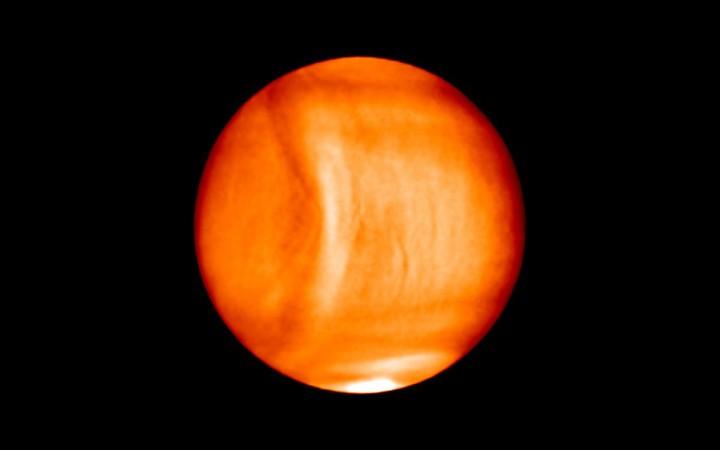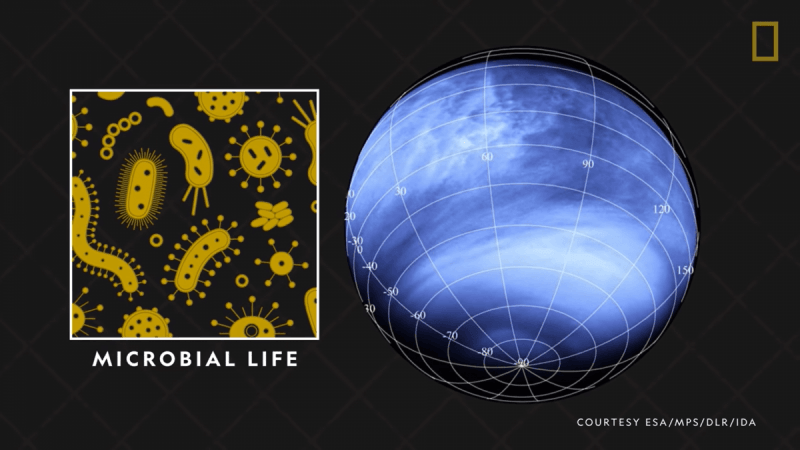Venus is the second planet from the Sun and the second-largest terrestrial planet in the Solar System after Earth. Venus can throw shadows and, on rare occasions, may be seen clearly with the bare eyes in broad daytime. Venus is one of the Solar System's four terrestrial planets, which means that it is a rocky body in the same way that Earth is. There will be a lot more information available on Venus soon, and scientists have been researching it.
Here are some fascinating facts about the planet Venus.

A day on Venus is longer than a year
Recent research used radio waves to accurately measure the length of a day on Venus, Earth's nearest neighbouring planet. This allowed scientists to evaluate other elements of the foggy, enigmatic world.
A single Venusian spin, the scientists discovered, takes 243.0226 Earth days. As Venus requires 225 Earth days to complete an orbit around the sun, a day on Venus lasts longer than a year.
Additionally, the study determined the tilt of Venus's axis and the size of the planet's core, providing for a more complete picture of a mysterious world that is often usually referred to as Earth's "evil twin."
"Venus was treated like a big disco ball to collect each unique measurement. Scientists illuminated Venus with a massive flashlight, the Goldstone radar, and noticed the reflections as they pushed across the Earth's surface "According to Jean-Luc Margot, a professor of planetary astronomy at the University of California, Los Angeles (UCLA), who led the study published in the journal Nature Astronomy.

Venus is known as Earth's evil twin
Venus has been termed Earth's "evil twin" due to its comparable size and likely formation from similar materials; it may have even had seas of liquid water at one point. However, Venus appears to have had an out-of-control greenhouse effect.
Venus's air pressure is 90 times that of Earth, Venus spins on its axis backwards in comparison to any of the other planets in the solar system, and Venus's surface temperature exceeds 900 degrees Fahrenheit (482 degrees Celsius), giving it the solar system's hottest planet - hot enough to melt lead.
Venus exemplifies how planetary habitats may develop throughout time, and comprehending this evolution is vital for our thinking in the hunt for life beyond Earth.

Did Venus ever host life?
To establish if life was ever conceivable on Venus, scientists must first study the planet's precious environment. This entails an examination of the planet's atmosphere, geology, and history.
With surface temperatures approaching 735 K (462 °C; 863 °F) and atmospheric pressure 90 times that of Earth, water-based life as we know it is implausible on Venus. Some scientists believe thermoacidophilic extremophile bacteria may survive in the Venusian atmosphere's temperate, acidic upper layers. In September 2020, scientists discovered phosphine in the planet's atmosphere, a possible biosignature. These findings, however, have been questioned.
On 8 February 2021, an update on investigations looking towards probable lifeform discovery on Venus (phosphine) and Mars (methane) was revealed. NASA announced two additional Venus missions on June 2, 2021: DAVINCI+ and VERITAS.

Unlike the other planets in our solar system, Venus spins clockwise on its axis
All other planets spin in the opposite way around their axis and circle the Sun in the opposite direction. Venus circles the Sun in an anti-clockwise direction as well, but its peculiar axis rotation is owing to its being inverted - it was pushed off its upright position earlier in its existence. Venus rotates on its axis in an east-west direction.
According to astronomers, a colliding celestial body shifted Venus so far from its initial location that it is currently upside down. Uranus is the only other planet that spins in an unusual direction, most likely as a consequence of another crash early in its life.

Venus is the second brightest natural object in the night sky after the Moon
Venus was possibly called after the pantheon's most attractive deity because it shone the brightest of the five planets known to early astronomers.
Venus was sometimes considered to be two distinct stars in ancient times, the evening star and the morning star — that is, the ones that first emerged at sunset and daybreak.
Venus' environment traps solar heat in an extreme form of the greenhouse effect. Venus' temperatures can melt lead. Venus' interior is a 2,400 mile (6,000 km) broad metallic iron core. Venus' liquid rocky mantle is 3,000 km thick. Venus' crust is thought to be 6 to 12 miles (10 to 20 km) thick. The spacecraft only lasted a few hours after touchdown before being destroyed.
Venus shines brightly than any other planet or even star in the night sky because of its highly reflecting clouds and proximity to Earth.

How were the rocks of Venus formed?
The latest spacecraft to safely descent through the environment and land on Venus was the Soviet VeGa-2 mission in 1985. Volcanic basalt plains surround it near the landing site, however, certain mountains on Venus are regarded distinct. Thus, Venus' landscape remains mysterious, especially further than the volcanic plains.
In addition, the DAVINCI spacecraft will include four cameras named VISOR (Venus Imaging System for Observational Reconnaissance) to detect rock composition on the planet's surface. "Most of Venus' surface is basalt, which is formed by volcanism," Arney explains. 'Tesseree' (regions of significantly deformed topography) in the mountains reveal a distinct composition. This is fascinating because it suggests more friendly circumstances in Venus' past. This probe's Venus Descent Imager (VenDI) instrument will measure one of these "tesserae," Alpha Regio. "It will help us grasp the 'tessera'," Arney says.

Venus is named after the Roman goddess of love and beauty
The Romans were aware of seven prominent celestial bodies: the Sun, the Moon, and the five brightest planets. They titled them after their greatest respected deities.
Venus, the second planet from the sun, is termed after the Roman goddess of love and beauty; it is the only planet to bear a female name. Venus was possibly called after the pantheon's most attractive deity because it shone the brightest of the five planets known to early astronomers.

















